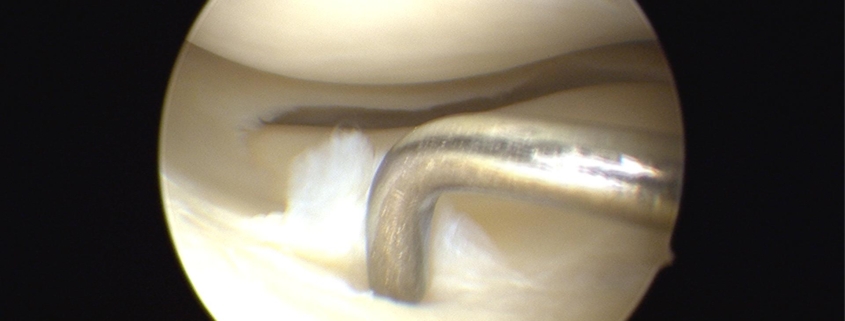Knee Meniscus Tears

Overview
Knee meniscus tears are common types of orthopedic injuries affecting millions of people across the world every year. The meniscus is a C-shaped piece of cartilage located in the knee, tasked with providing vital cushioning and stability to the knee joint. When the meniscus is torn, painful symptoms can arise, often limiting mobility and reducing quality of life.
Types
Meniscus tears can be classified into various types, each with its specific set of characteristics:
-
- Longitudinal Tears: These happen along the length of the meniscus and are often sports-related injuries.
-
- Parrot-Beak Tears: These wounds appear in the shape of a parrot’s beak and can occur in any area of the meniscus.
-
- Transverse (Radial) Tears: These happen when a tear moves from the inner edge of the meniscus radially outwards.
-
- Flap Tears: These are created when a piece of the meniscus becomes dislodged, creating a flap-like effect.
Causes
Common causes of knee meniscus tears include:
-
- Sudden Twisting or Turning: Actions like pivoting, cutting, or decelerating suddenly, especially with the foot planted and the knee flexed.
-
- Direct Impact: Being hit directly on the knee, common in contact sports, can cause a tear.
-
- Age and Wear and Tear: As we age, our menisci become worn and can tear more easily, even during routine movements.
Symptoms
While symptoms can vary, some common ones related to a knee meniscus tear include:
-
- Pain, especially when twisting or rotating the knee
-
- Swelling and stiffness
-
- Difficulty in bending or straightening the knee
-
- A popping sensation at the time of injury or afterward
-
- Feeling as though your knee is “locked” or unable to move
Diagnosis
A diagnosis of a knee meniscus tear might include:
-
- Physical Examination: Your doctor will inspect your knee and perform specific tests to check for a meniscus tear.
-
- X-Rays: While meniscus tears cannot be seen on X-rays, they can help rule out other knee problems.
-
- MRI Scans: An MRI provides detailed images of the knee and can detect a meniscus tear.
Treatment Options
The treatment spectrum for knee meniscus tears ranges from non-invasive approaches to surgical options:
-
- Conservative Management: This might include rest, ice, compression, elevation (RICE), physical therapy, and the use of over-the-counter pain relievers as needed.
-
- Surgery: For more serious tears, arthroscopic surgery may be recommended. During this minimally invasive procedure, a surgeon repairs or trims the tear.
Living With Knee Meniscus Tears
Here are some practical tips for managing a meniscus tear:
-
- Engage in low-impact activities such as swimming or cycling to maintain strength and flexibility.
-
- Maintain a healthy weight to reduce pressure on your knees.
-
- Adhere strictly to your physical therapy program.
-
- Be patient. Recovery can take time, and it’s important not to rush the process.
When to Seek Help
If you experience any of the following, seek immediate medical attention:
-
- Severe pain in your knee
-
- Inability to move your knee normally
-
- Persistent swelling
-
- Locking of your knee
Remember, while this guide provides general knowledge about knee meniscus tears, it’s crucial to consult with healthcare professionals for a correct diagnosis and personalized treatment plan.
